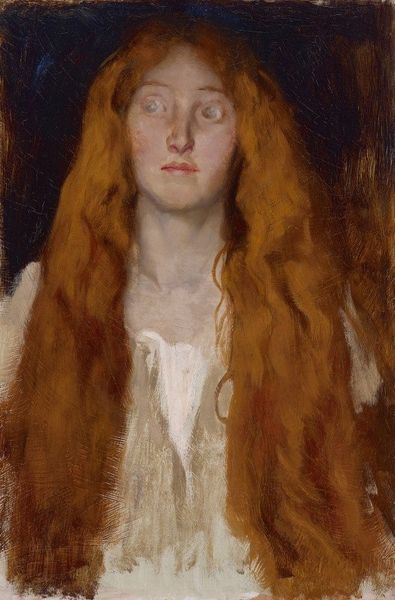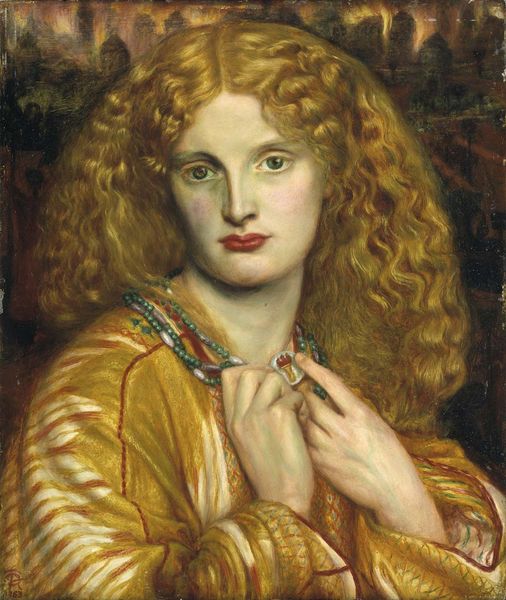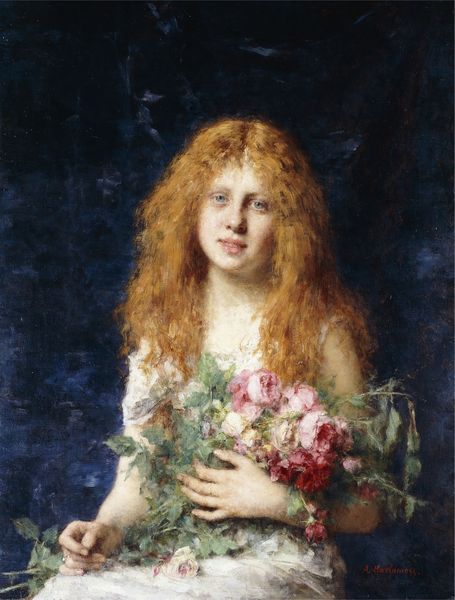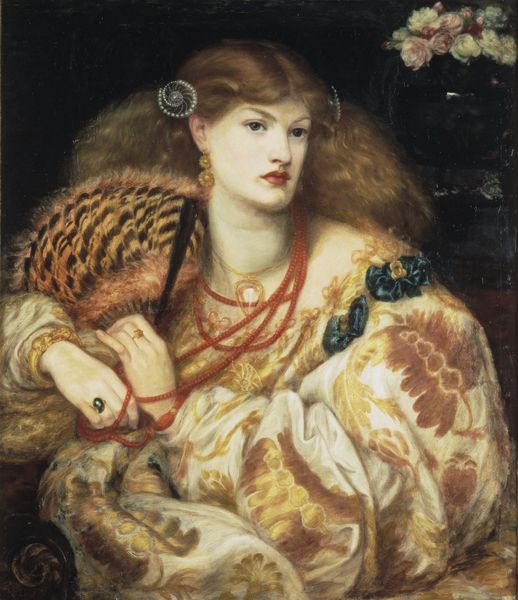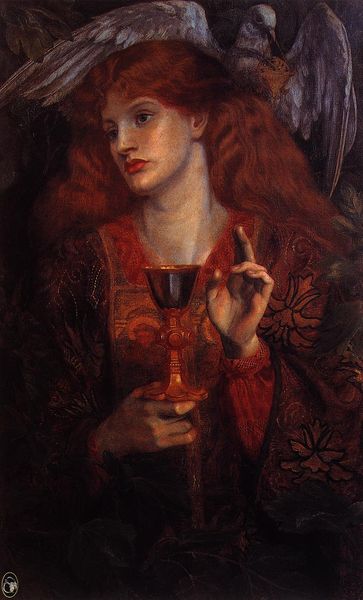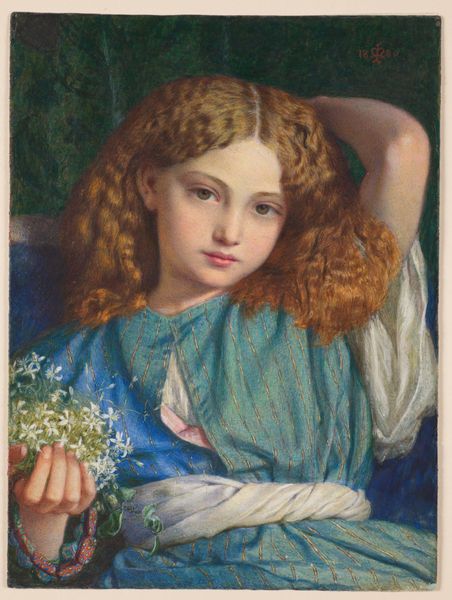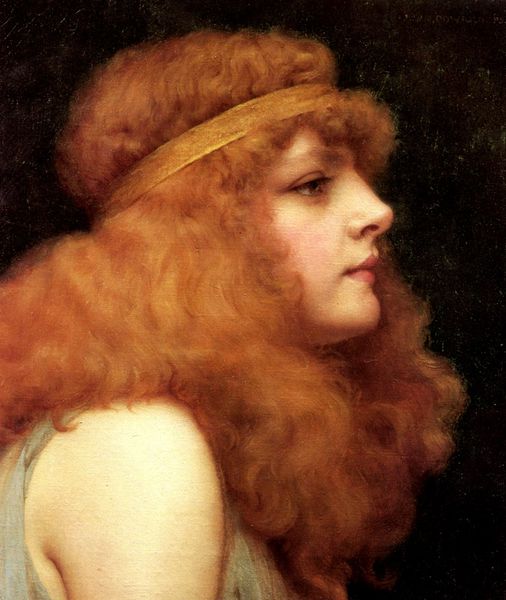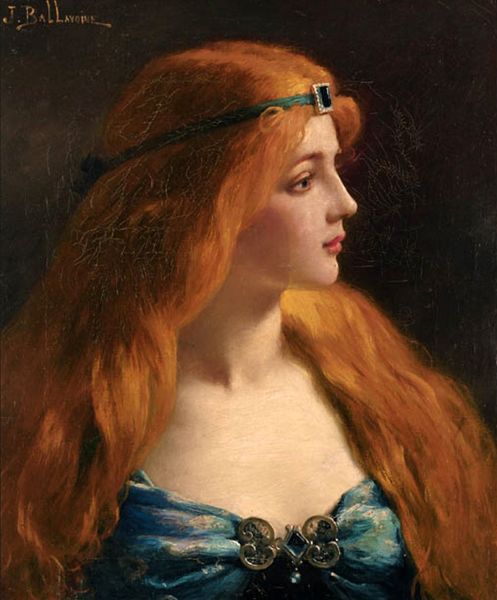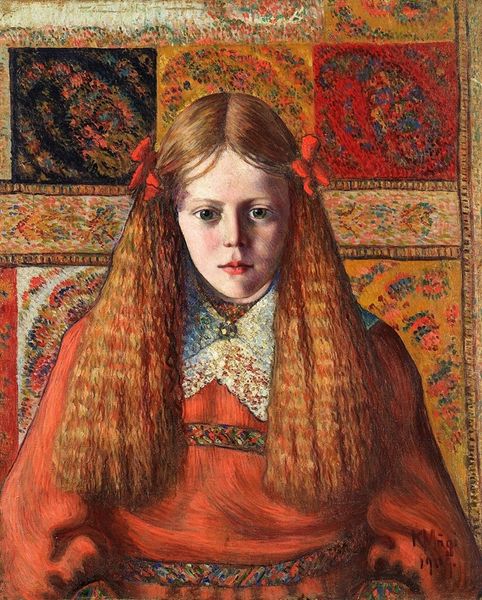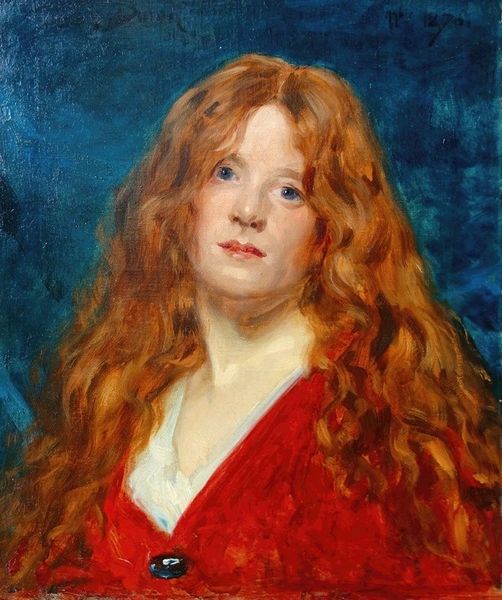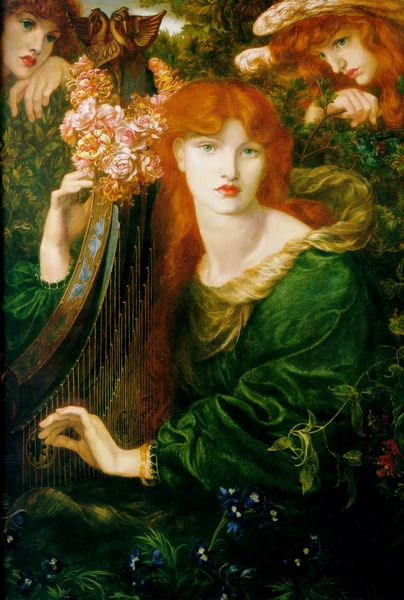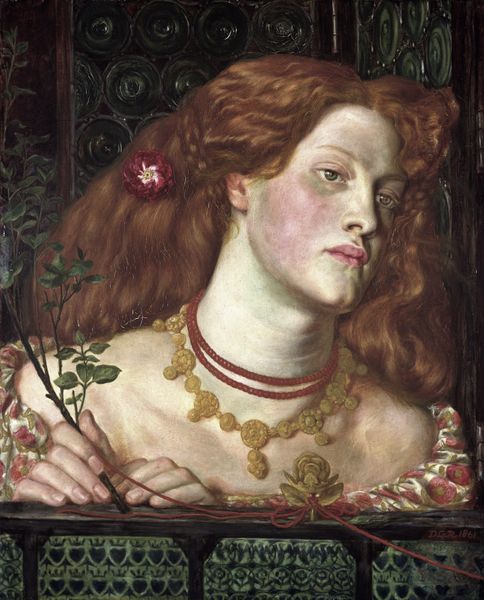
The Bridesmaid 1851
0:00
0:00
sirjohneverettmillais
Fitzwilliam Museum (University of Cambridge), Cambridge, UK
Dimensions: 20.3 x 27.9 cm
Copyright: Public domain
Curator: We're looking at "The Bridesmaid" by Sir John Everett Millais, completed in 1851. Currently, it resides here at the Fitzwilliam Museum in Cambridge. What strikes you first about it? Editor: The sheer cascade of red-gold hair. It dominates the composition and almost feels like a shimmering curtain around her. There’s a strong verticality countered by the still-life elements on the table below. Curator: It’s fascinating how Millais renders hair as a tangible material, almost sculptural in its form. Consider the societal context: such vibrant hair color, while celebrated today, might have been perceived differently in the Victorian era. Think about how Pre-Raphaelite artists often challenged conventional beauty standards and were interested in using ordinary women as their muses. The model here was a worker from a local hat-making factory, and she has almost a monumental, iconic aura. Editor: Absolutely, the interplay of texture and light. I notice the contrast between the shimmering hair and the smooth, almost porcelain-like quality of her skin, offset by the granular strokes used for the deep indigo background, sprinkled with barely visible star-like forms. I can interpret this cosmic setting as symbolizing her future fate, her unknown married future as she gazes reflectively to the beyond. Curator: Her dress, a rather simply made yellow dress with handmade adornments. The detail here points to an economy and labor. It speaks to the accessibly available materials in local manufacture during that time period, doesn't it? The sprig of white blossoms, which is presumably orange blossoms. It may also have symbolic weight beyond its naturalistic form. Perhaps this is where Millais blurs the lines between documentation and symbolism of ordinary women as powerful agents in cultural work. Editor: Good eye to notice the white flowers and indigo, I appreciate their gentle accent amid such vibrant coloration. A stark palette contributes to the portrait’s serene yet slightly melancholic tone. Curator: It's compelling how this painting, rooted in specific material and social conditions, transcends them through skillful formal elements. We're left with a poignant image that resonates even now. Editor: Indeed. The artist creates such harmony of structure, subject, and coloration; a wonderful meditation on form, content, and historical inquiry.
Comments
No comments
Be the first to comment and join the conversation on the ultimate creative platform.

